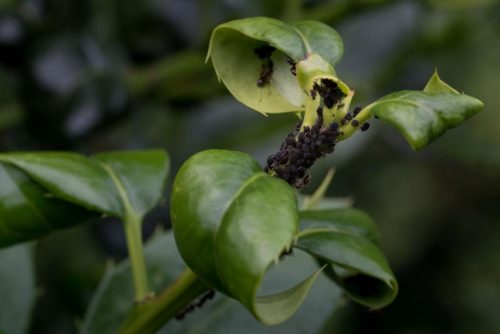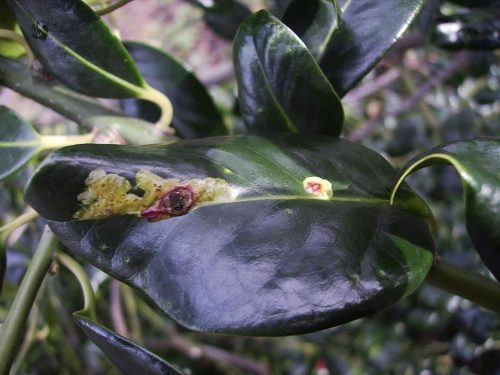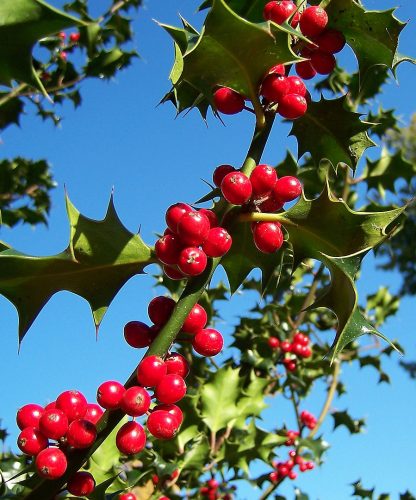Holly, evergreen deciduous tree native to southern and western Europe.
Also known as:
English holly
Common holly
You are viewing the mobile-adapted version of the page.
The one for tablets, laptop and desktop also provides general information, such as origin, toxicity and cultivation.
- Berries and leaves are poisonous; but not for birds
Holly – (Ilex), evergreen deciduous tree native to southern and western Europe. Found in bee
Holly likes well-drained soil in a sunny spot. Part shade is also well tolerated, as is acidic soil. Holly can be planted as a hedge. Holly is hardy and tolerates snow well. Protect young plants from dry easterly winds for the first few years during frosts.
Holly tolerates pruning well: to keep the tree or shrub in shape (no bare branches at the bottom), regular pruning is necessary. Pruning in early spring.
In the United States, the American holly (Ilex opaca) is often used as a substitute for the English holly (Ilex aquifolium).
Bugs

Black aph

In winter, yellow/red blisters form next to the midrib of the leaf: holly leaf miner (Phytomiza ilicis)
Fungi & diseases
Holly is not very susceptible to fungi and diseases.
Other
Because holly grows at the top of the tree or shrub and the old leaves at the bottom of the tree or shrub dry out and fall off, the tree or shrub becomes bare at the bottom. Regular pruning prevents this.

